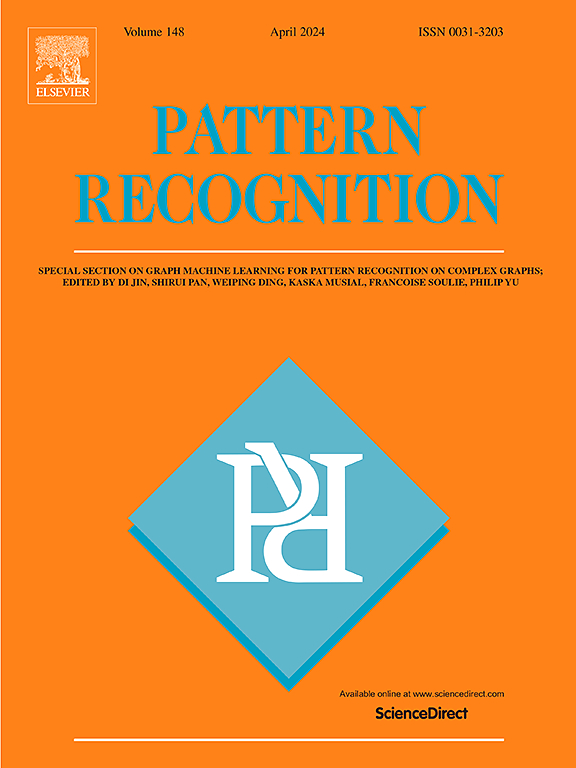Structure anchor graph learning for multi-view clustering
IF 7.6
1区 计算机科学
Q1 COMPUTER SCIENCE, ARTIFICIAL INTELLIGENCE
引用次数: 0
Abstract
With the growth of data and diverse data sources, clustering large-scale multi-view data has emerged as a prominent topic in the field of machine learning. Anchor graph is an efficient strategy to improve the scalability of graph based multi-view clustering methods because it can capture the essence of the entire dataset by utilizing only a small set of representative anchor points. However, most existing anchor graph based methods encounter at least one of the following two challenges: the first one is the separation of anchor selection from the anchor graph construction process, while the second one is the requirement of an additional clustering step to generate the indicator matrix. Both of the separated steps can potentially lead to suboptimal solutions. In this paper, we propose structure anchor graph learning for multi-view clustering (SAGL), which jointly addresses the two challenges within a unified learning framework. Specifically, instead of utilizing the fixed anchors selected during the pre-processing step, SAGL jointly learns the consensus anchors in the latent space, and constructs anchor graph by assigning larger similarity values to sample-anchor pairs with shorter distances. Meanwhile, by manipulating the connected components of the anchor graph with rank constraint, SAGL obtains the anchor graph with clear cluster structure that can directly reveal the indicator of samples without any post-processing step. As a result, it becomes a truly one-stage end-to-end learning problem. In addition, a simple yet effective transformation is introduced to convert vector-sum-from to matrix-multiplication-form with trace operation, which leads an efficient optimization algorithm. Extensive experiments on several real-world multi-view datasets demonstrate the effectiveness and efficiency of the proposed methods over other state-of-the-art MvC methods.
多视图聚类的结构锚图学习
随着数据量的增长和数据源的多样化,大规模多视图数据聚类已成为机器学习领域的一个突出课题。锚图是提高基于图的多视图聚类方法的可扩展性的一种有效策略,因为它可以利用一小部分有代表性的锚点来捕捉整个数据集的本质。然而,大多数现有的基于锚图的方法至少遇到以下两个挑战中的一个:第一个是锚点选择与锚图构建过程分离,第二个是需要额外的聚类步骤来生成指标矩阵。这两个分离的步骤都可能导致次优解。在本文中,我们提出了用于多视图聚类(SAGL)的结构锚图学习,它在一个统一的学习框架内共同解决了这两个挑战。具体而言,SAGL算法不是利用预处理阶段选择的固定锚点,而是共同学习潜空间中的共识锚点,并通过赋予距离较短的样本锚点对更大的相似值来构建锚点图。同时,SAGL通过对锚图的连通分量进行秩约束处理,得到聚类结构清晰的锚图,无需任何后处理步骤即可直接揭示样本的指标。因此,它变成了一个真正的单阶段端到端学习问题。此外,还引入了一种简单而有效的变换,通过跟踪运算将矢量和式转化为矩阵乘法式,从而得到了一种高效的优化算法。在几个真实世界的多视图数据集上进行的大量实验表明,与其他最先进的MvC方法相比,所提出方法的有效性和效率更高。
本文章由计算机程序翻译,如有差异,请以英文原文为准。
求助全文
约1分钟内获得全文
求助全文
来源期刊

Pattern Recognition
工程技术-工程:电子与电气
CiteScore
14.40
自引率
16.20%
发文量
683
审稿时长
5.6 months
期刊介绍:
The field of Pattern Recognition is both mature and rapidly evolving, playing a crucial role in various related fields such as computer vision, image processing, text analysis, and neural networks. It closely intersects with machine learning and is being applied in emerging areas like biometrics, bioinformatics, multimedia data analysis, and data science. The journal Pattern Recognition, established half a century ago during the early days of computer science, has since grown significantly in scope and influence.
 求助内容:
求助内容: 应助结果提醒方式:
应助结果提醒方式:


